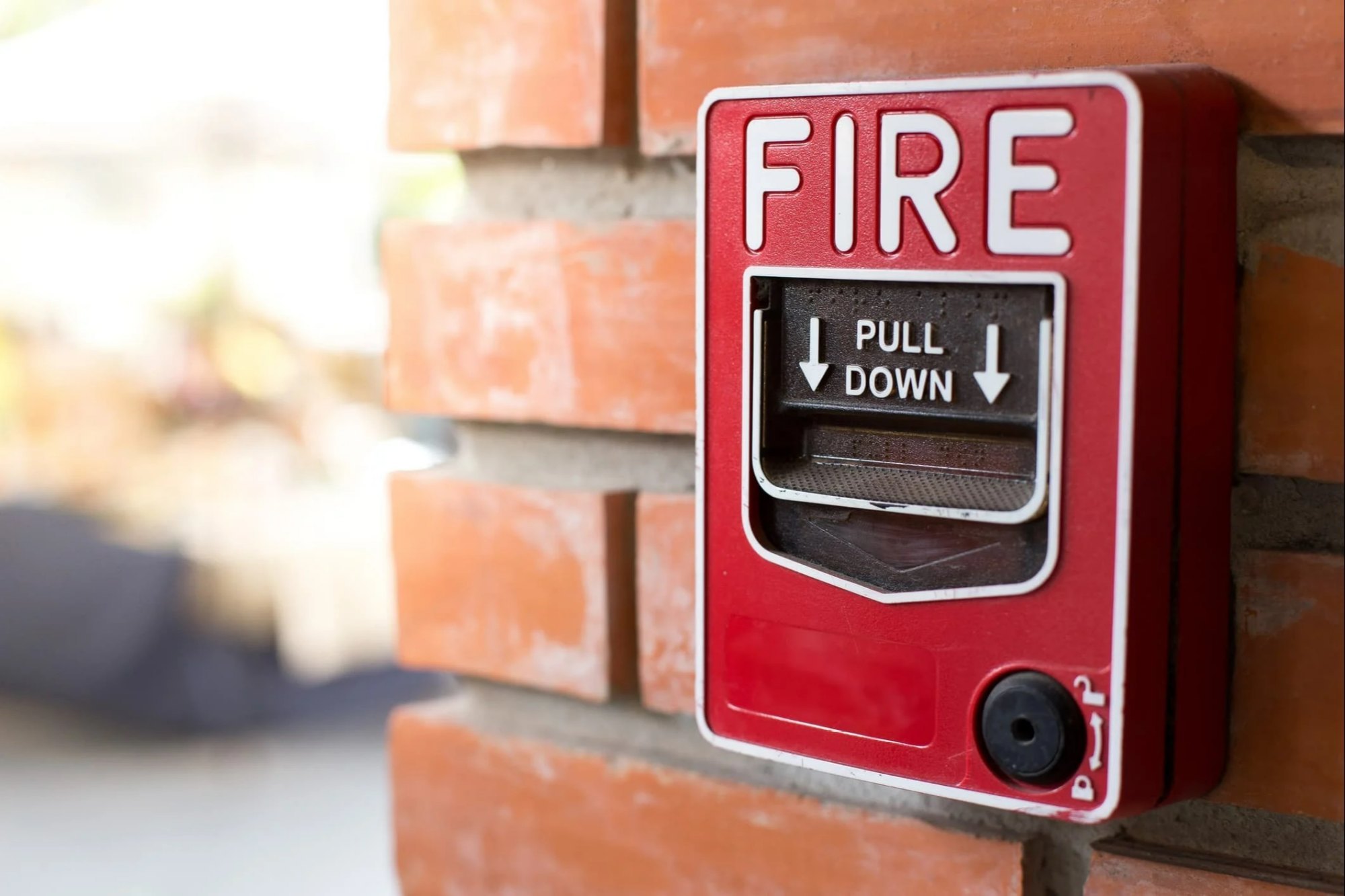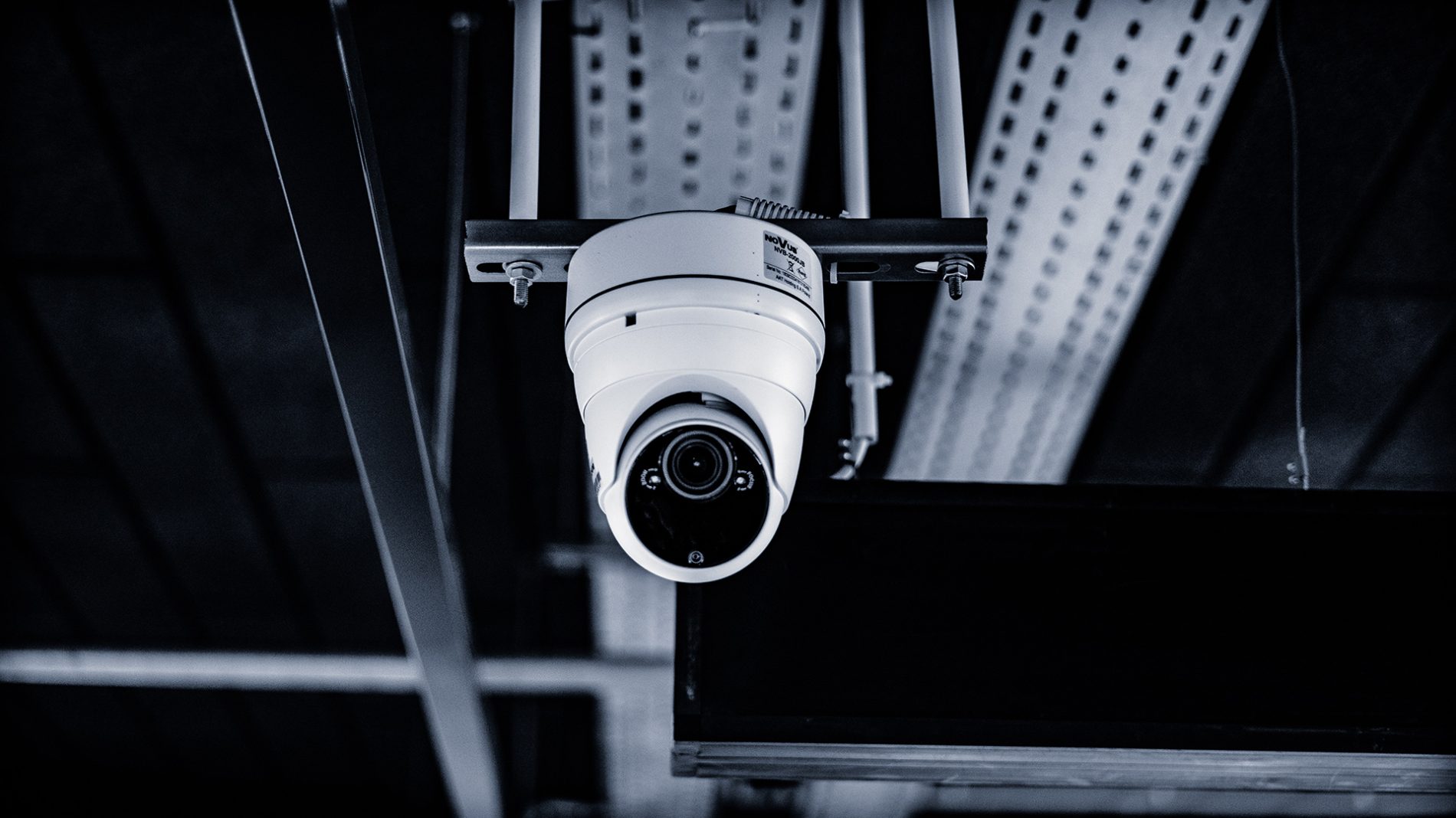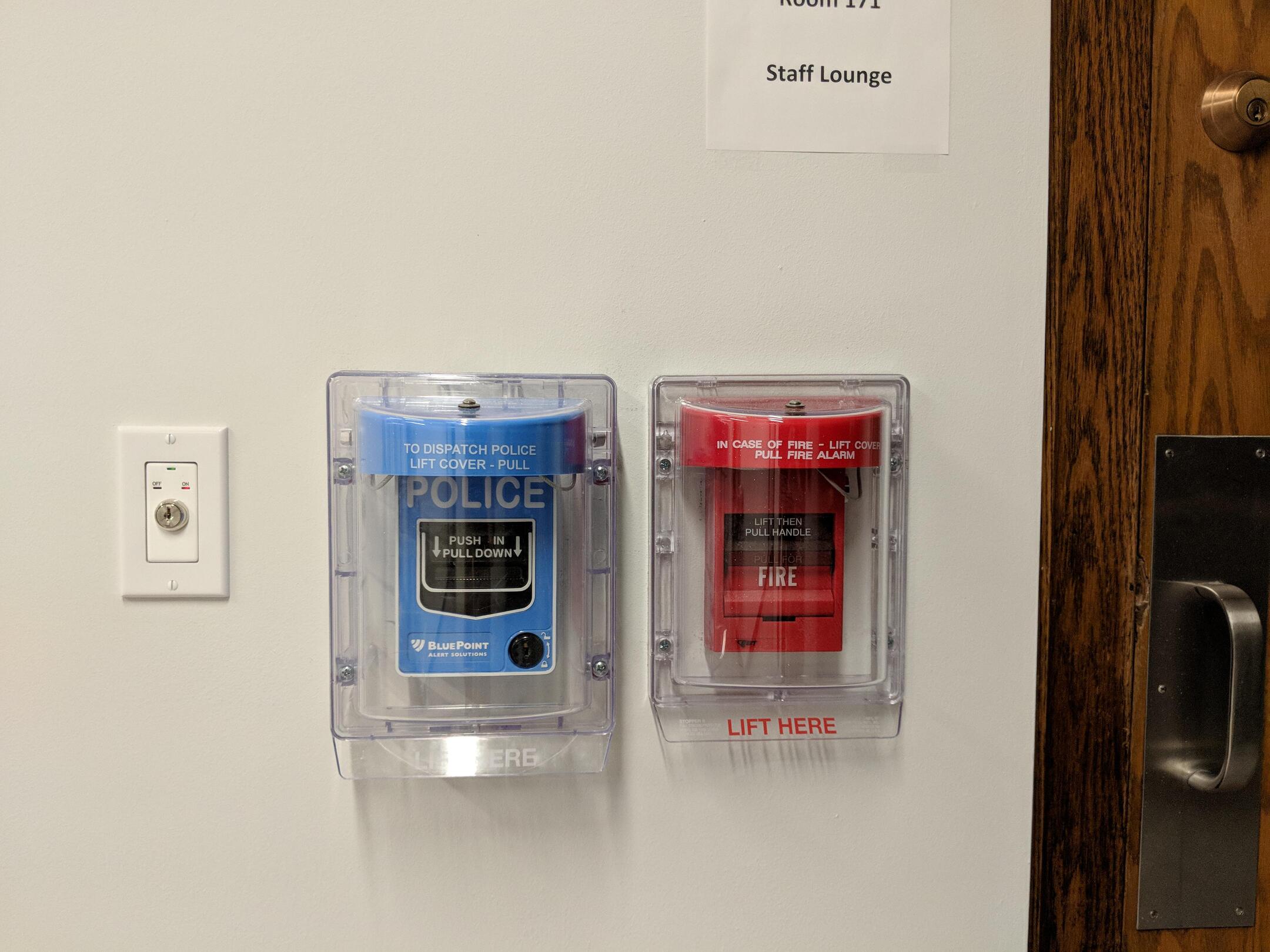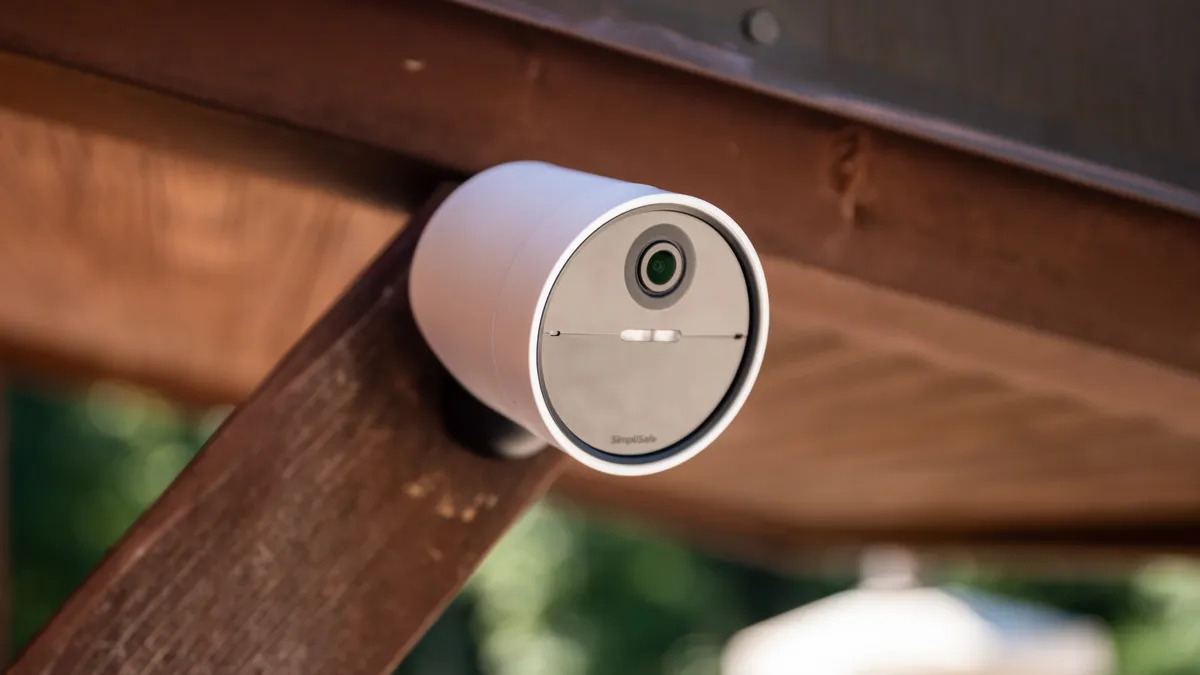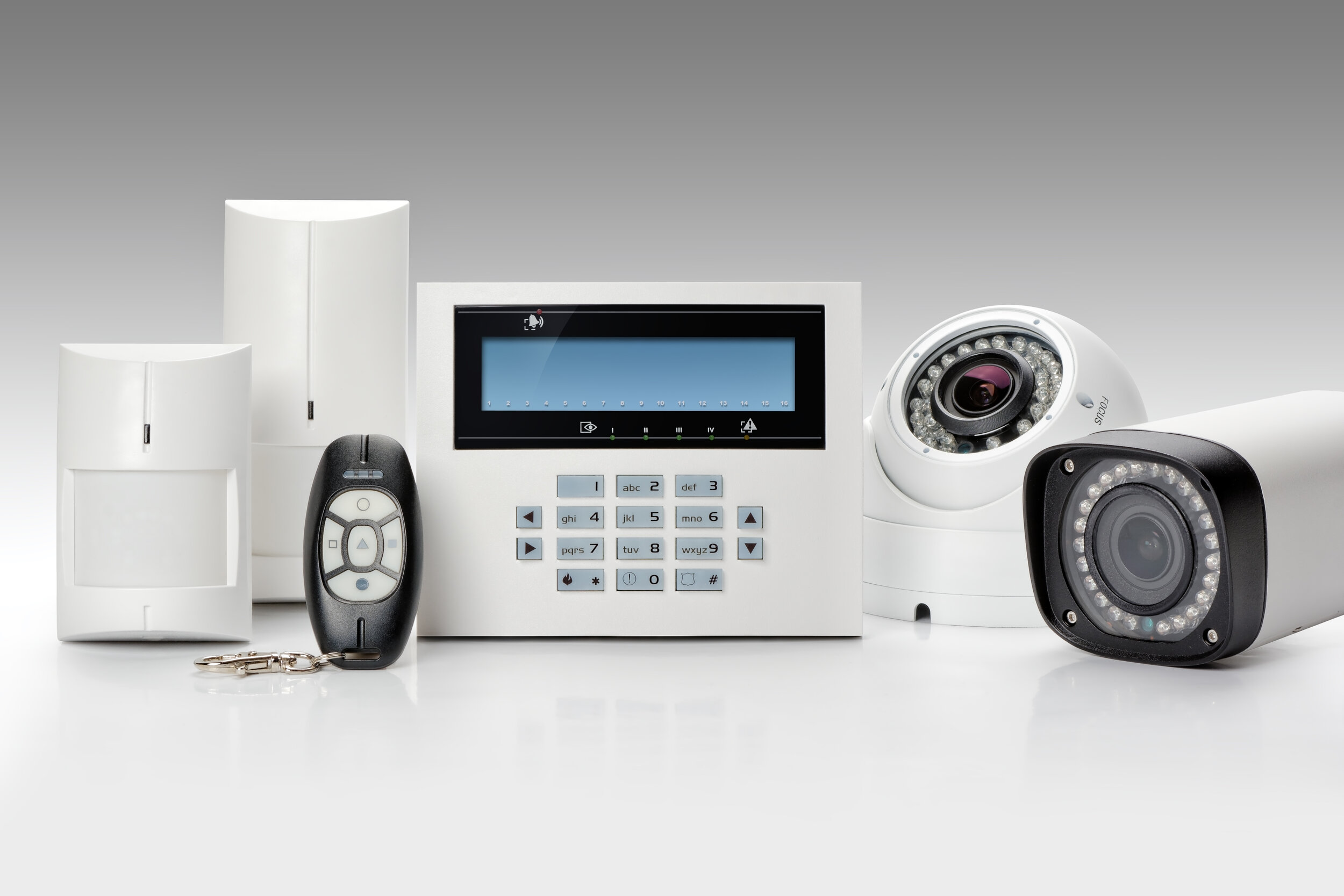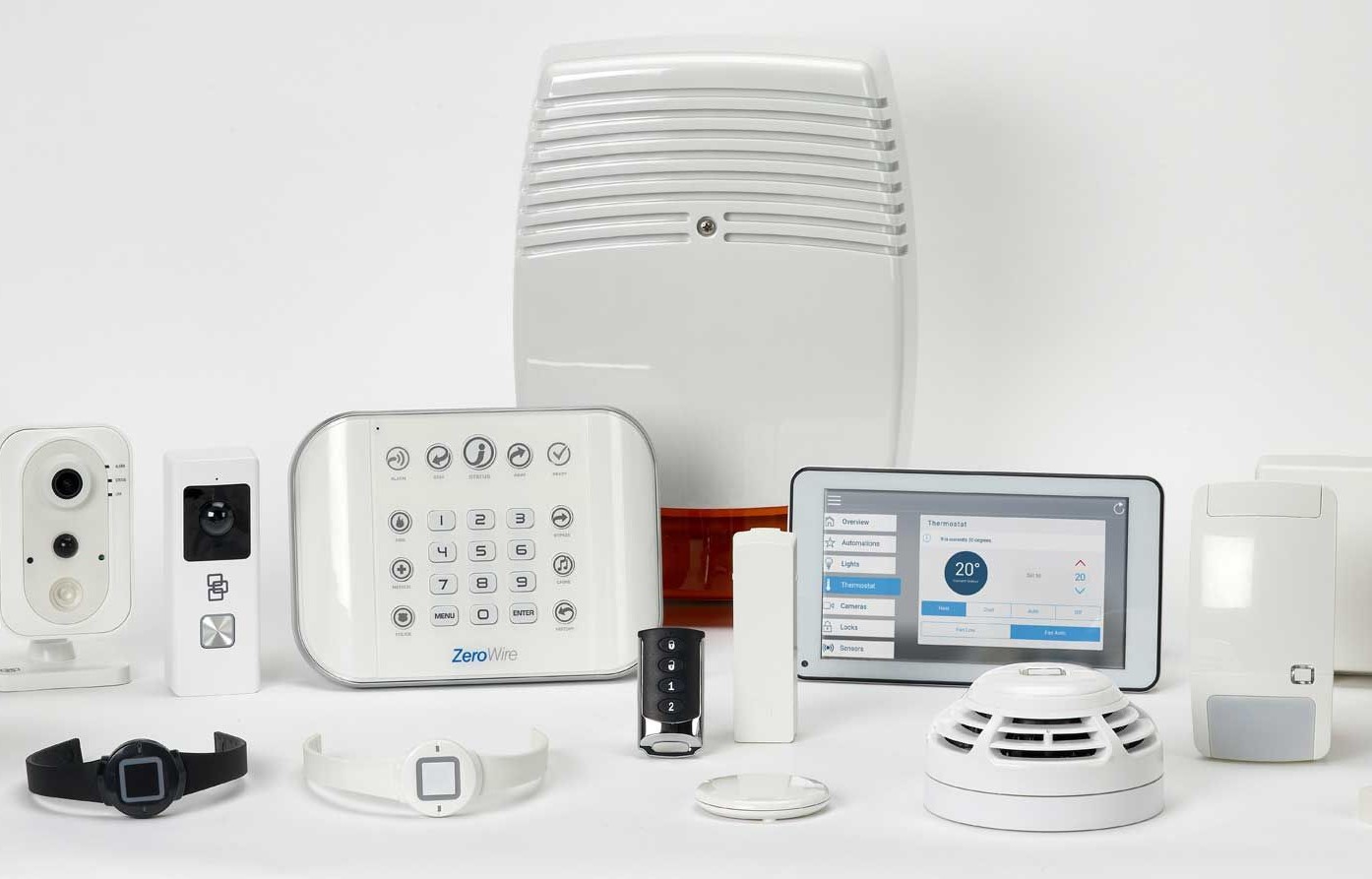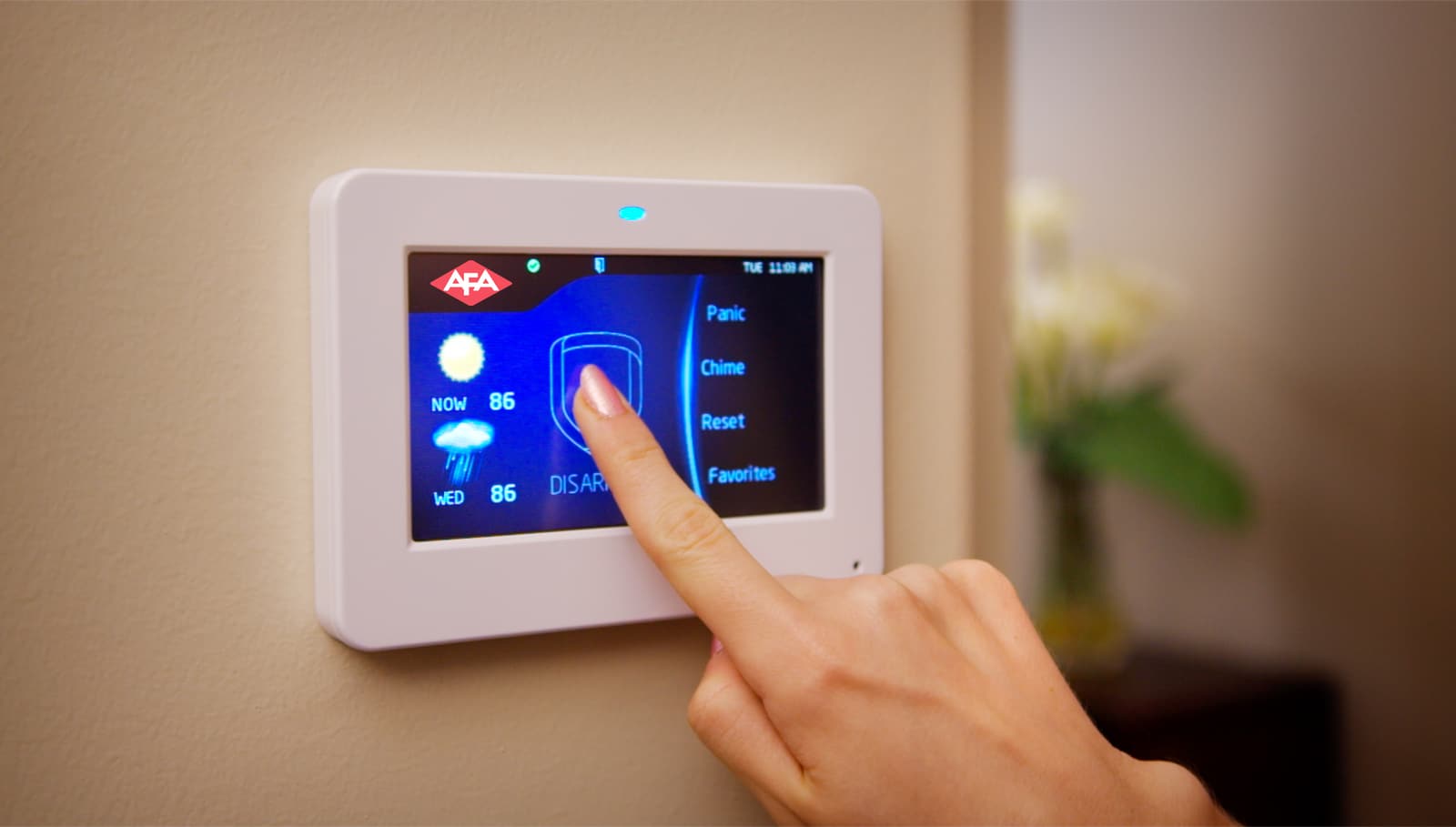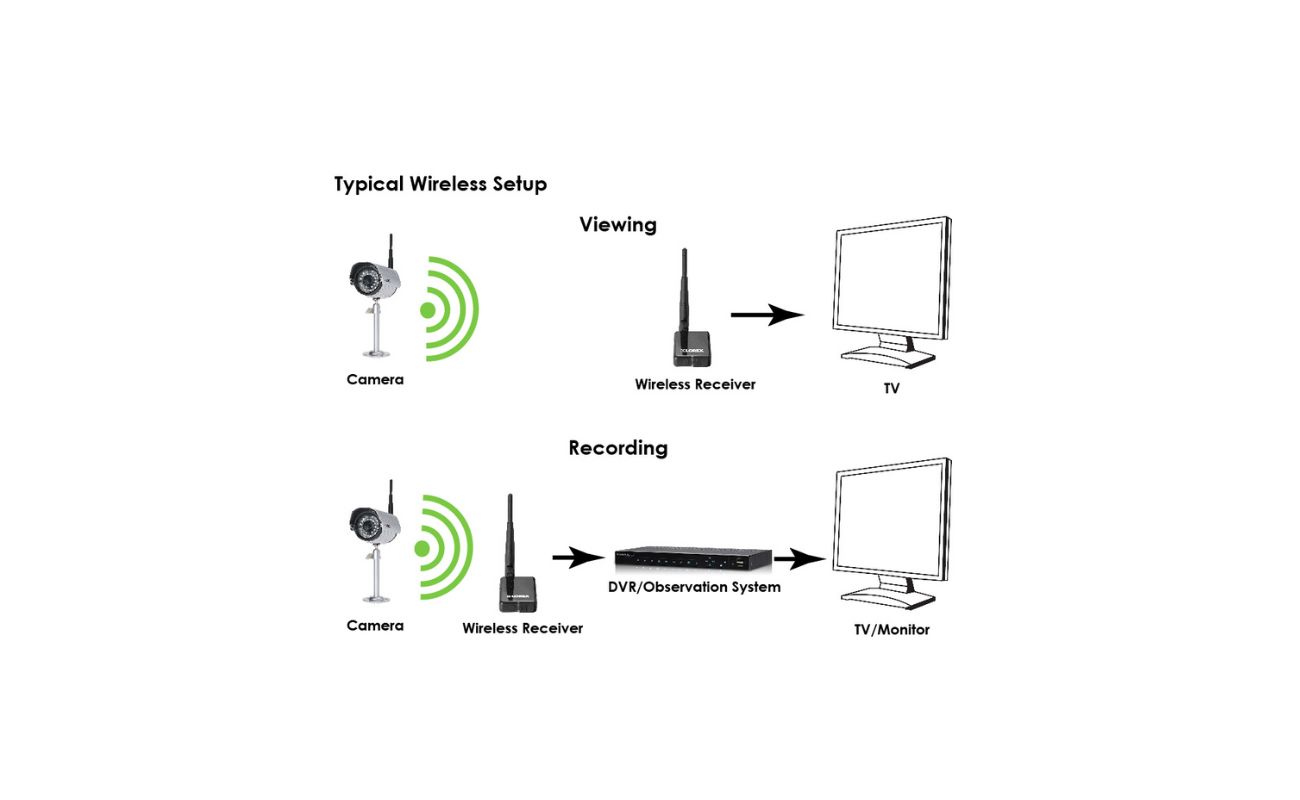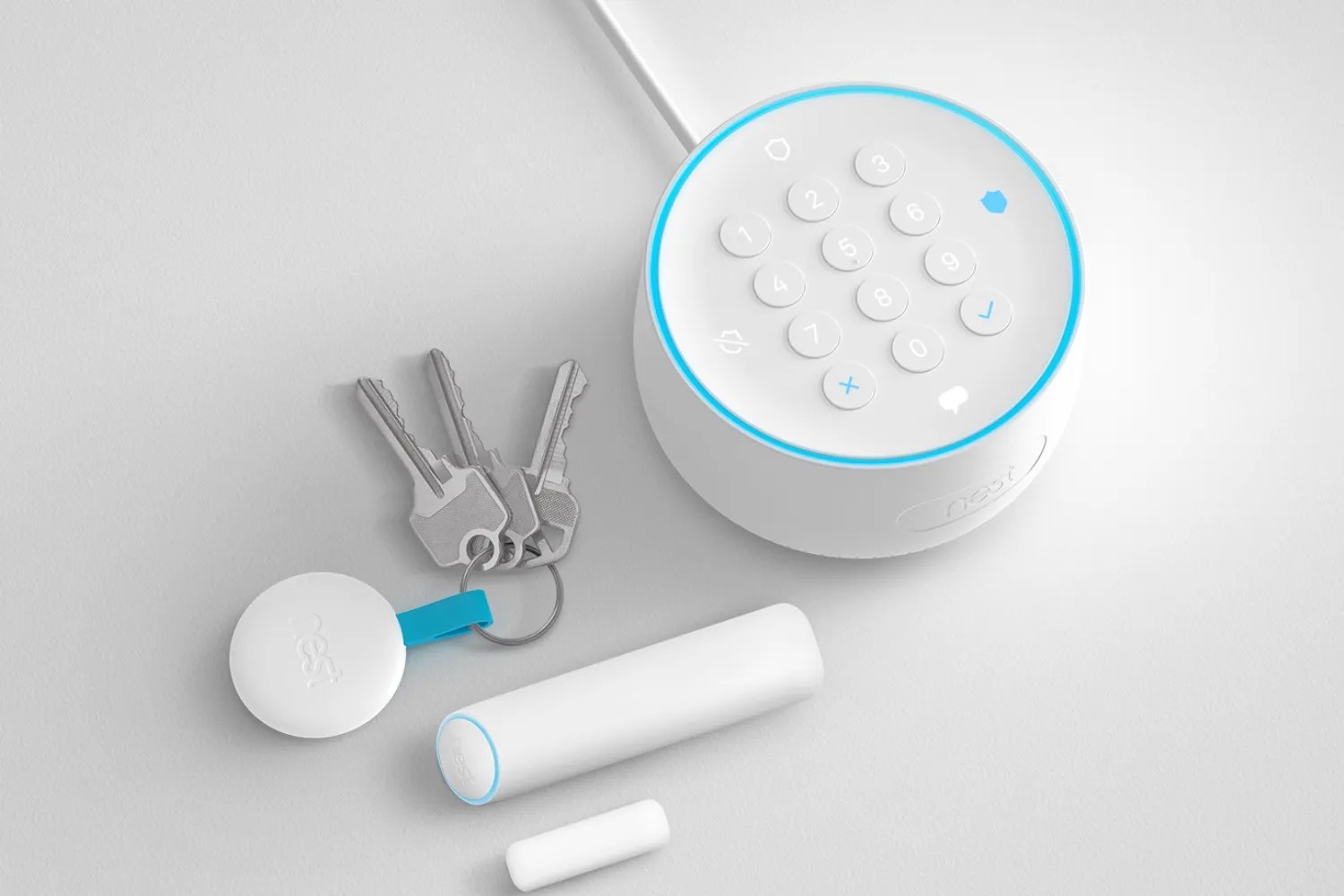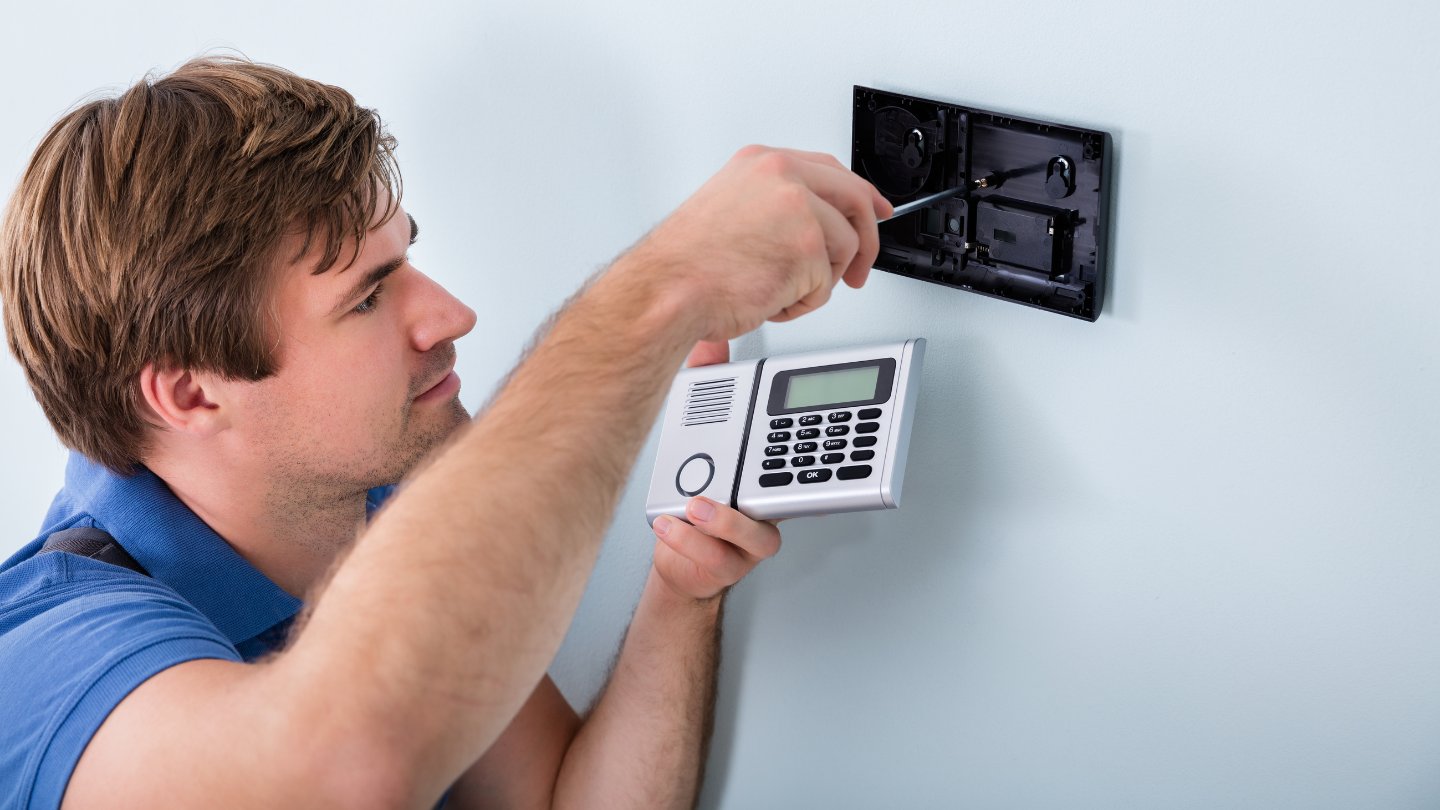Home>Home Security and Surveillance>How Do Wireless Home Alarm Systems Work
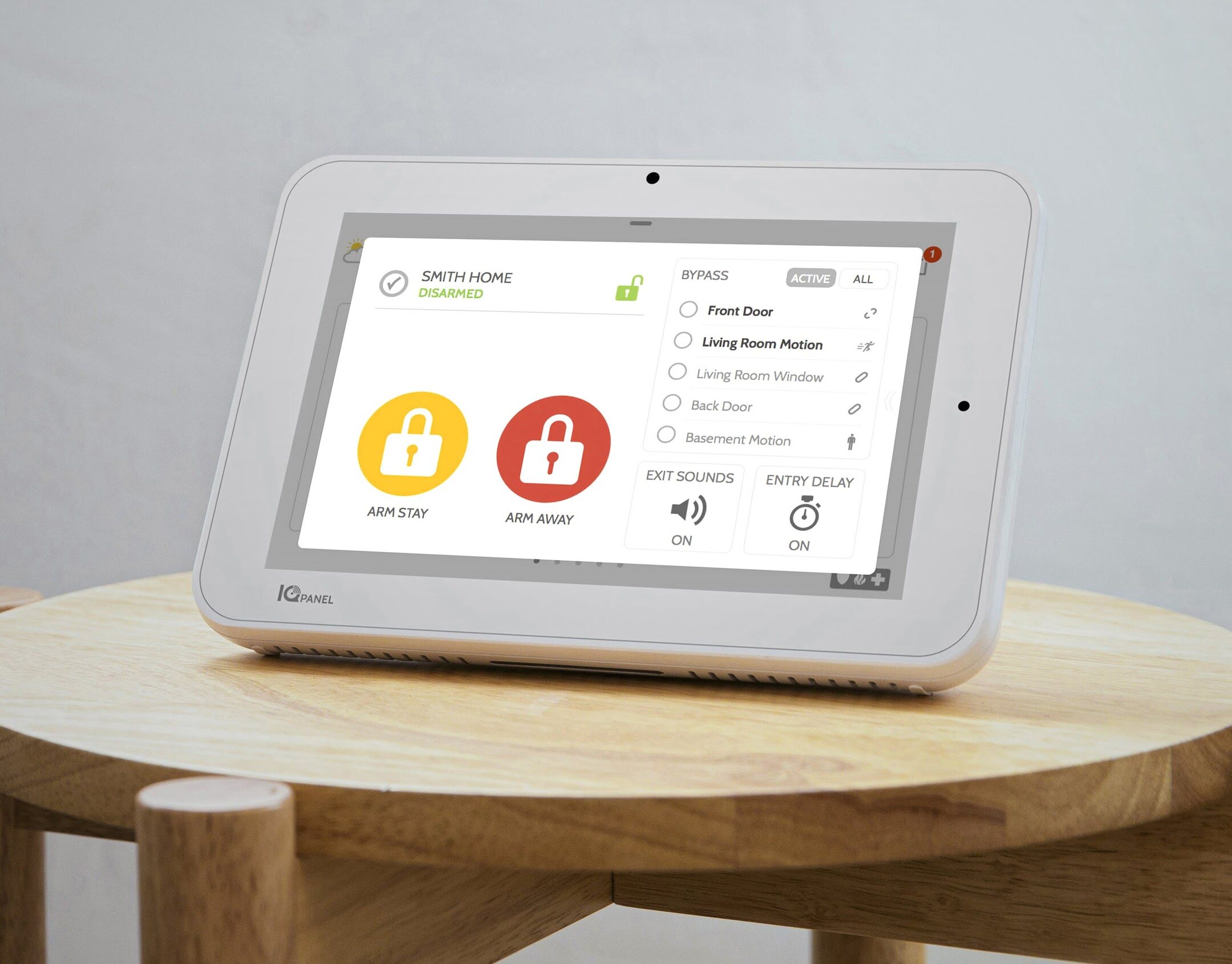

Home Security and Surveillance
How Do Wireless Home Alarm Systems Work
Modified: March 7, 2024
Discover how wireless home alarm systems work and improve your home security and surveillance. Find out everything you need to know about home security systems and their installation process.
(Many of the links in this article redirect to a specific reviewed product. Your purchase of these products through affiliate links helps to generate commission for Storables.com, at no extra cost. Learn more)
Introduction
Welcome to the world of wireless home alarm systems! In today’s modern age, the safety and security of our homes have become paramount. With rising concerns about burglaries and home invasions, it’s crucial to have effective security measures in place to protect our loved ones and valuable possessions. One of the most popular options on the market is wireless home alarm systems.
Wireless home alarm systems provide an advanced and convenient way to safeguard your home. Gone are the days when you had to rely on complicated wiring and invasive installation processes. With wireless technology, you can now enjoy a seamless and hassle-free security solution for your home.
In this article, we’ll delve into the world of wireless home alarm systems, exploring how they work, their components, installation process, benefits, and drawbacks. By the end of this comprehensive guide, you’ll have a solid understanding of wireless home alarm systems and be equipped to make an informed decision about the best solution for your home security needs.
So let’s dive right in and discover the fascinating world of wireless home alarm systems!
Key Takeaways:
- Wireless home alarm systems use advanced technology to protect homes without the need for complicated wiring, offering flexibility, easy installation, and integration with smart devices for convenient security management.
- Key components of wireless home alarm systems include the control panel, sensors, alarms, security cameras, and monitoring services, providing comprehensive protection and peace of mind for homeowners.
Read more: How Do CPI Wireless Alarm Systems Work
Understanding Wireless Home Alarm Systems
Before we explore how wireless home alarm systems work, it’s important to have a clear understanding of what they are. Simply put, wireless home alarm systems are security systems that use wireless technology to detect and deter intruders. Unlike traditional wired alarm systems, wireless systems function without the need for physical connections between sensors and control panels.
One of the key advantages of wireless home alarm systems is their flexibility and adaptability. Since the sensors and devices communicate wirelessly, you have the freedom to place them wherever you need them most, without the constraints of wiring limitations. This makes wireless systems ideal for both homeowners and renters who may not want to make permanent alterations to their property.
Moreover, wireless home alarm systems can be easily expanded and customized to fit your specific security needs. You can add additional sensors, cameras, and other devices as your requirements evolve, ensuring comprehensive coverage for your home.
Another crucial aspect to understand about wireless home alarm systems is their integration with smart home technology. Many of these systems offer the ability to connect with your smartphone or other smart devices, giving you remote access and control over your security system. This means you can monitor and manage your alarms, receive notifications, and even view real-time footage from your security cameras, all from the convenience of your mobile device.
Overall, wireless home alarm systems provide a modern, flexible, and convenient solution for protecting your home. They combine advanced technology with seamless integration, allowing you to have peace of mind and full control over your home security.
Components of Wireless Home Alarm Systems
Wireless home alarm systems consist of several key components that work together to provide effective security for your home. Understanding these components is essential for selecting the right system and configuring it to meet your specific needs. Let’s take a closer look at the primary components of wireless home alarm systems:
- Control Panel: The control panel is the brain of the alarm system. It receives signals from the sensors and triggers the appropriate response, such as sounding the alarm or notifying the monitoring company. The control panel is typically installed near the main entrance or in a central location of your home.
- Keypad: The keypad is used to arm and disarm the alarm system. It allows you to enter a unique code or use a key fob to activate or deactivate the system. The keypad is usually located near the main entrance for easy access.
- Wireless Sensors: These sensors are the crucial components that detect potential intrusions or environmental changes. There are various types of wireless sensors, including door/window sensors, motion sensors, glass break sensors, and smoke/heat detectors. They communicate wirelessly with the control panel to trigger an alarm if any activity is detected.
- Sirens/Alarms: Sirens or alarms are audible devices that are activated when the alarm system is triggered. They are designed to alert you and scare off intruders. Many wireless home alarm systems also offer the option of silent alarms, which alert the monitoring company without sounding an audible alarm.
- Security Cameras: Security cameras are an integral part of many wireless home alarm systems. They provide video surveillance, allowing you to monitor your property both internally and externally. Most wireless security cameras can be accessed remotely through a smartphone app or web portal.
- Monitoring Service: Some wireless home alarm systems offer the option of professional monitoring. This means that when an alarm is triggered, a monitoring company is notified, and they can dispatch authorities or contact you and your emergency contacts to verify the situation. Monitoring services may require a subscription fee.
These are the primary components that make up a wireless home alarm system. Depending on your specific needs and preferences, you may choose to add additional devices such as panic buttons, smart locks, or environmental sensors to enhance the functionality and security of your system.
Installation of Wireless Home Alarm Systems
One of the standout benefits of wireless home alarm systems is their easy and straightforward installation. Unlike wired systems that require drilling holes and running cables throughout your home, wireless systems can be set up without the need for professional installation. Here’s a step-by-step guide to installing a wireless home alarm system:
- Plan the Layout: Start by surveying your home and identifying the areas where you want to install sensors and cameras. Consider the entry points, such as doors and windows, as well as high-risk areas or places where valuable items are stored.
- Mount the Control Panel: Choose a suitable location for the control panel, preferably near the main entrance or in a central area of your home. Mount it securely on the wall using the provided mounting brackets and screws. Ensure that it is easily accessible and visible.
- Install the Keypad: Place the keypad near the main entrance or any other convenient location. It should be easily accessible for arming and disarming the system. Typically, keypads are mounted on the wall or positioned on a tabletop.
- Install Wireless Sensors: Follow the manufacturer’s instructions to install wireless sensors on doors, windows, and other desired locations. Usually, these sensors come with adhesive backing or small screws for easy installation. Ensure that the sensors are properly aligned and securely attached.
- Mount Security Cameras: If you have opted for security cameras, determine the best locations for mounting them both indoors and outdoors. Use the appropriate mounting brackets and screws to attach the cameras securely. Ensure that they cover the desired area and have a clear line of sight.
- Configure the System: Once all the components are installed, follow the instructions provided by the manufacturer to configure your wireless home alarm system. This usually involves programming the control panel, setting up user codes, connecting to your home’s Wi-Fi network, and pairing devices.
- Test the System: After the installation and configuration, thoroughly test the system to ensure that all the sensors, alarms, and cameras are functioning correctly. Arm and disarm the system, trigger the sensors to confirm proper detection, and verify live video feeds from the security cameras.
It’s important to note that while wireless home alarm systems can be installed by homeowners, it’s always recommended to carefully read the manufacturer’s instructions and guidelines. If you are unsure or prefer professional assistance, you can opt for a reputable security company to install the system for you.
With the installation complete, you can now enjoy the peace of mind that comes with knowing your home is protected by a reliable and user-friendly wireless home alarm system.
How Wireless Home Alarm Systems Work
Wireless home alarm systems operate on the principle of wireless communication between the various components of the system. Let’s take a closer look at how these systems work:
Wireless Sensors: The sensors in a wireless home alarm system are equipped with radio transmitters that send signals wirelessly to the control panel. These sensors can include door/window sensors, motion sensors, glass break sensors, and more. When a sensor is triggered, such as when a door or window is opened, it sends a signal to the control panel indicating the breach.
Control Panel: The control panel is the central hub of the wireless home alarm system. It receives signals from the sensors and interprets them to determine the appropriate action. If an alarm is triggered, the control panel activates the siren or notifies the monitoring company, depending on the system’s configuration.
Wireless Communication: Wireless home alarm systems utilize radio wave frequencies to transmit signals between the sensors and the control panel. These frequencies allow for seamless and reliable communication without the need for physical connections. The range of wireless communication can vary, but most systems are designed to function within a typical residential property.
Key Fobs and Keypads: Wireless home alarm systems often include key fobs or keypads that allow users to arm and disarm the system. These devices communicate wirelessly with the control panel and can be conveniently mounted near the main entrance or carried on a keychain. They provide an easy and quick way to control the system’s status without accessing the control panel directly.
Smartphone Integration: Many wireless home alarm systems offer the ability to connect with smartphones or other smart devices. This allows homeowners to remotely access and control their security system. Through a smartphone app or web portal, users can arm or disarm the system, receive real-time notifications, and even view live video feeds from security cameras.
Monitoring Services: Some wireless home alarm systems can be optionally connected to a monitoring service. When an alarm is triggered, the control panel sends a signal to the monitoring company. They then take appropriate action, such as contacting the homeowner or dispatching authorities to the location. Monitoring services provide an extra layer of security and peace of mind.
Battery Power: Unlike wired alarm systems, which are typically connected to a power source, wireless home alarm systems rely on batteries to power the sensors and control panel. The batteries need to be regularly checked and replaced to ensure the system’s functionality.
Overall, wireless home alarm systems offer a reliable and convenient means of securing your home. Their wireless communication capabilities, integration with smart devices, and easy installation make them an attractive option for homeowners looking to enhance their home security.
Tip: Wireless home alarm systems work by using sensors to detect motion or entry, then sending a signal to a control panel which activates an alarm and notifies the homeowner or monitoring service.
Read more: How Do Alarm Systems Work?
Benefits of Wireless Home Alarm Systems
Wireless home alarm systems offer numerous benefits that make them an excellent choice for homeowners seeking to enhance their home security. Let’s explore some of the key advantages of wireless home alarm systems:
- Easy Installation: Wireless home alarm systems are incredibly easy to install compared to traditional wired systems. There is no need for drilling holes or running cables throughout your home. With wireless technology, you can set up the system yourself without the need for professional assistance.
- Flexibility and Scalability: Wireless home alarm systems offer a great deal of flexibility in terms of sensor placement. You can easily position the sensors and devices wherever you need them most without the limitations of wiring. Additionally, wireless systems are highly scalable, allowing you to add or remove devices as your security needs change over time.
- Seamless Integration: Many wireless home alarm systems can be integrated with other smart home devices. This means you can control and monitor your security system through your smartphone, tablet, or voice-controlled virtual assistant. The integration provides convenience and peace of mind, allowing you to manage your home security from anywhere, at any time.
- No Physical Tampering: Since wireless systems do not rely on physical connections, they are not susceptible to tampering or sabotage. Unlike wired systems that can be disabled by cutting the wires, wireless systems continue to function even if a sensor or device is tampered with.
- Portability: Wireless home alarm systems are highly portable, making them suitable for renters or those who frequently move. You can easily uninstall the system and take it with you when you change residences, without leaving any permanent modifications behind.
- Reduced Maintenance: Another advantage of wireless home alarm systems is that they typically require less maintenance compared to wired systems. With no physical connections to check or repair, you can focus on basic upkeep such as battery replacement and occasional firmware updates.
- Enhanced Security Features: Wireless home alarm systems often come equipped with advanced security features such as mobile alerts, video surveillance, and remote access. These features provide real-time updates and allow you to monitor your home’s security even when you’re away.
- Affordability: Wireless home alarm systems are generally more affordable than traditional wired systems. They eliminate the need for costly wiring and professional installation expenses, making them a cost-effective and accessible option for homeowners on various budgets.
With their easy installation, flexibility, and advanced features, wireless home alarm systems provide a reliable and convenient solution for protecting your home and ensuring the safety of your loved ones and belongings.
Drawbacks of Wireless Home Alarm Systems
While wireless home alarm systems offer many benefits, it’s important to consider their drawbacks as well. Understanding these limitations can help you make an informed decision when selecting a home security system. Here are some of the potential drawbacks to consider:
- Reliability: Some homeowners may have concerns about the reliability of wireless systems. While advancements in wireless technology have improved reliability, there is still the potential for signal interference or disruptions. In rare cases, obstructions or environmental factors may impact the effectiveness of wireless communication between sensors and the control panel.
- Battery Life: Wireless home alarm systems rely on batteries to power the sensors and control panel. While battery life has significantly improved, it’s essential to monitor and replace batteries regularly to ensure the system’s functionality. Forgetting to replace batteries can result in a non-functioning security system.
- Limited Range: Wireless signals have a limited range, typically around 150 to 300 feet. If you have a larger property or want to install sensors far away from the control panel, you may experience issues with signal range. In such cases, a wireless repeater or signal booster may be necessary.
- Signal Interference: Wireless home alarm systems operate using radio frequencies, which can be susceptible to interference from other electronic devices or nearby wireless networks. While manufacturers take measures to minimize interference, it’s possible to experience intermittent disruptions in signal communication.
- System Compatibility: If you already have existing wired security devices or a wired infrastructure in your home, integrating them with a wireless system may pose some challenges. It’s essential to ensure compatibility between different components or consider the need for additional equipment or adapters.
- Initial Setup and Configuration: While wireless home alarm systems are relatively easy to install, the initial setup and configuration can be time-consuming. It may involve programming the control panel, pairing sensors, connecting to Wi-Fi, and setting up user codes. Following the manufacturer’s instructions is crucial to ensure a smooth installation process.
- Wireless Network Vulnerabilities: Wireless home alarm systems that connect to your home’s Wi-Fi network may introduce potential cybersecurity risks. It’s important to ensure your Wi-Fi network is secure, with strong passwords and proper encryption, to prevent unauthorized access to your security system.
While these drawbacks are worth considering, it’s important to note that the technology behind wireless home alarm systems continues to evolve, addressing many of these concerns. With proper maintenance and regular monitoring, wireless systems can provide reliable and effective home security.
Choosing the Right Wireless Home Alarm System
When it comes to selecting the right wireless home alarm system for your needs, there are several factors to consider. Here are some essential points to keep in mind during your decision-making process:
- Home Size and Layout: Evaluate the size and layout of your home to determine the number of sensors and cameras you will need. Consider the entry points, vulnerable areas, and locations where you want surveillance. Ensure the system you choose provides adequate coverage for your property.
- Security Needs and Features: Identify your specific security requirements. Do you primarily need intrusion detection, monitoring for fires and carbon monoxide, or video surveillance? Make a list of must-have features such as mobile alerts, remote access, motion detection, and night vision. Choose a system that offers the features you need.
- Scalability: Consider your future needs and whether the system can easily accommodate changes. Look for a wireless alarm system that is scalable, allowing you to add or remove devices as your requirements evolve.
- Compatibility: If you have existing smart home devices or plan to integrate them in the future, ensure that the wireless home alarm system is compatible with your preferred smart home ecosystem. This will help streamline control and automation processes.
- Budget: Set a budget for your home security system and consider the costs of equipment, installation, and ongoing monitoring (if applicable). Remember that while wireless systems can offer affordability, certain features and professional monitoring may come with additional expenses.
- Brand and Reputation: Research different brands and consider their reputation in the industry. Look for positive customer reviews, longevity in the market, and reliable customer support. Opting for a reputable brand can provide peace of mind and ensure quality products and services.
- Professional Monitoring: Decide whether you want professional monitoring for your system. This service can provide an added layer of security, as trained personnel can quickly respond to alarm triggers and contact authorities if necessary. Determine if the system offers professional monitoring as an option and consider the associated costs.
- Installation and Ease of Use: Consider your comfort level with installing and managing the system. Evaluate whether you prefer a DIY installation or would rather have professional assistance. Additionally, look for a system with a user-friendly interface and intuitive controls to ensure ease of use.
By considering these factors, you can narrow down your options and choose the wireless home alarm system that best suits your specific needs, budget, and preferences. Don’t hesitate to reach out to security experts or consult with reputable providers to get personalized advice and recommendations.
Conclusion
Wireless home alarm systems provide a modern and convenient solution for securing your home and ensuring the safety of your loved ones and belongings. With easy installation, flexibility, and advanced features, these systems have gained popularity among homeowners seeking reliable and user-friendly security solutions.
Throughout this guide, we explored the various components of wireless home alarm systems and how they work together to provide effective protection. We also discussed the benefits they offer, such as easy installation, flexibility, seamless integration, and enhanced security features. However, it’s important to consider the potential drawbacks, including concerns about reliability, battery life, and system compatibility.
When choosing the right wireless home alarm system for your needs, it’s essential to evaluate factors such as the size and layout of your home, your security requirements, scalability, budget, brand reputation, professional monitoring options, and ease of use. By considering these aspects, you can select a system that meets your specific needs and provides the peace of mind you desire.
Remember, wireless home alarm systems are continually evolving, improving their reliability, features, and compatibility. It’s always a good idea to stay informed about the latest advancements and consult with security experts for personalized recommendations.
Investing in a wireless home alarm system is an investment in the security and well-being of your home. With the right system in place, you can rest easy knowing that you have taken proactive measures to protect what matters most to you.
So, take the first step towards enhancing your home security and explore the world of wireless home alarm systems today!
Frequently Asked Questions about How Do Wireless Home Alarm Systems Work
Was this page helpful?
At Storables.com, we guarantee accurate and reliable information. Our content, validated by Expert Board Contributors, is crafted following stringent Editorial Policies. We're committed to providing you with well-researched, expert-backed insights for all your informational needs.
